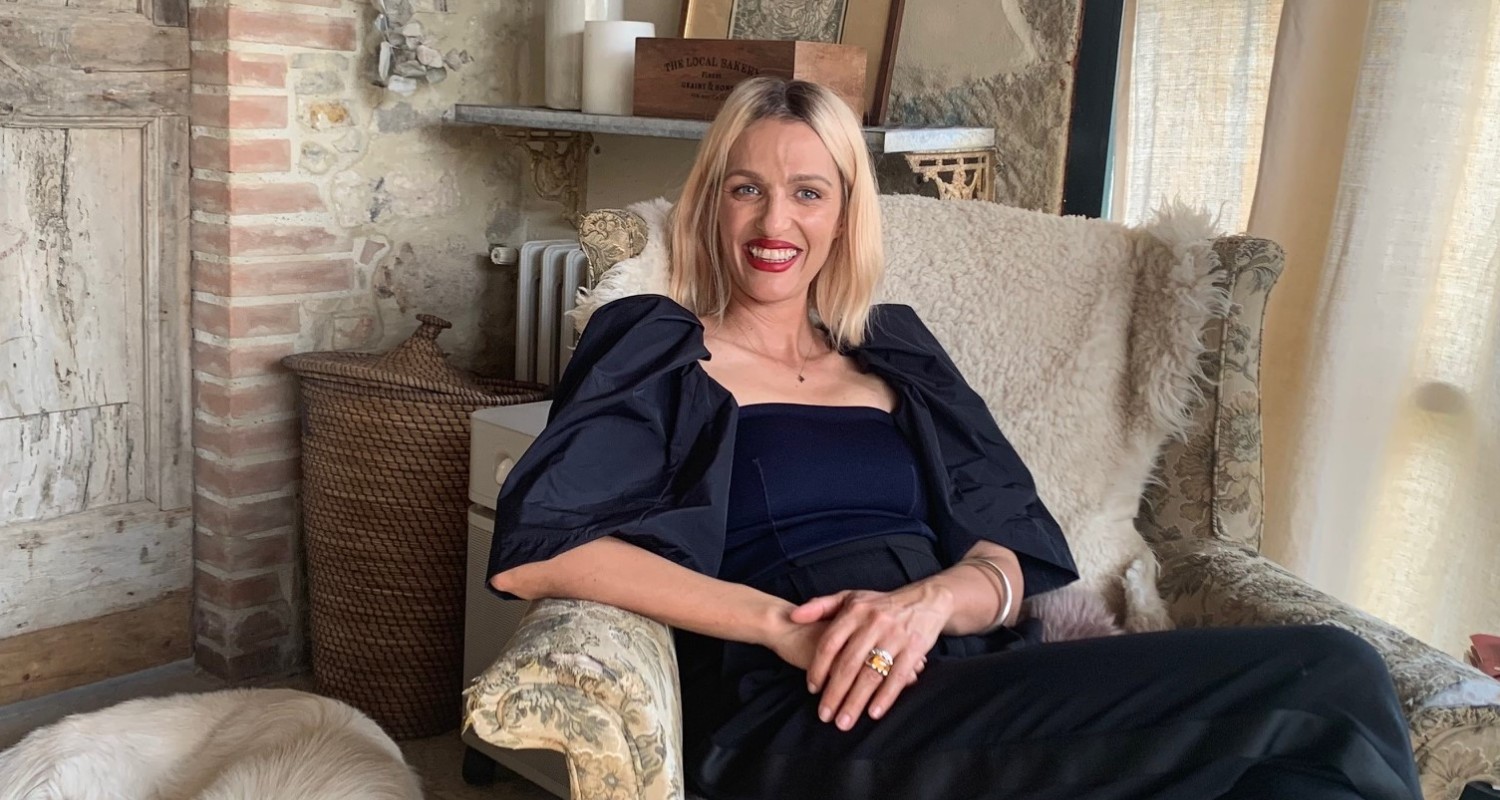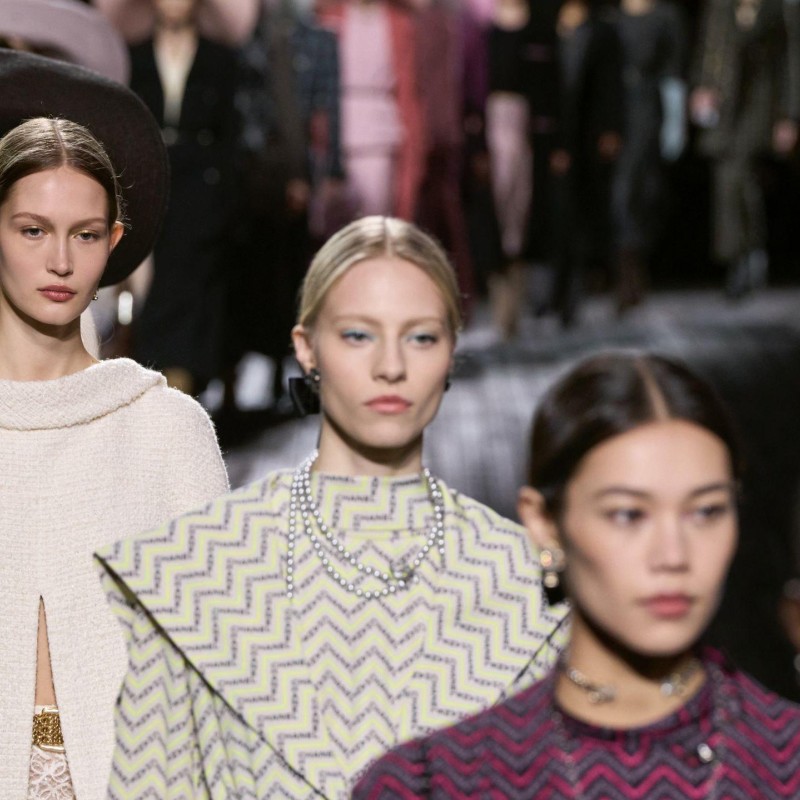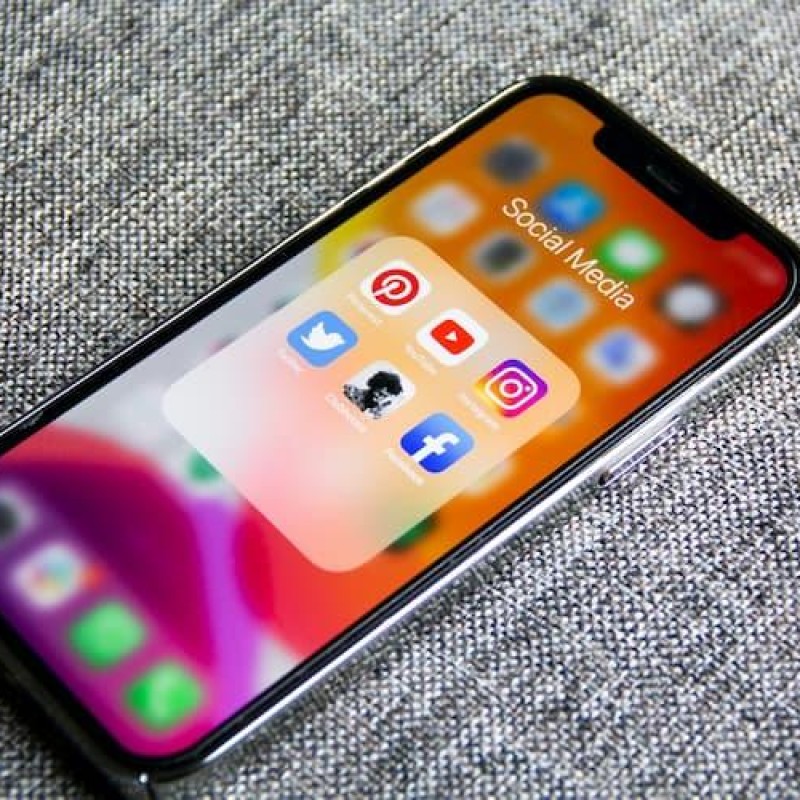"Brands are successful when they understand their DNA. While remaining relevant is key, when we think about product and service, failure comes when brands stray too far from that natural compass".
C.R.

If there’s an industry where the product is everything, then luxury fashion is most definitely one of them. Products become iconic, and they play a part in shaping the way people dress and transmit their personality.
As we continue our Beyond Talks series, this week we have the pleasure of speaking to Chandra Recchi, a luxury product expert with experience working with brands such as Burberry, Acne and Coach. With an extensive international career under her belt, Chandra shares with us her views on the luxury fashion industry and other personal topics that will no doubt be interesting to professionals looking for inspiration and advice.
Chandra and Beyond Talent are holding the interview just after International Women’s Day. While many outsiders might believe the fashion industry is dominated by women, a study conducted by Business of Fashion shows fewer than 50 percent of well-known womenswear brands are designed by women, and only 14 percent of major brands have a female executive in charge. Because of these figures, coupled with women’s day vibes, we felt it was only fitting to start our chat on the topic…
BT: As a professional, experienced woman with a top management position, why do you think this is still happening? What advice would you give to other women looking to follow your footsteps, right to the top of the fashion world?
CR: As women, I don’t think we’re taught to appreciate or develop the skills that are necessary to succeed in top executive positions. We’re taught the importance of fitting in and getting along, but not to prioritise our own natural leadership. These skills are something men are taught to cultivate from an early age. This can make it difficult for women to be a part of the conversation. Not because they are incapable, but because they sometimes lack the language and negotiation skills necessary to be heard.
Overcoming these obstacles is necessary to open the doors to top positions within the industry. That said, I do believe things are changing. What makes a great leader today has evolved, and women are uniquely positioned to provide the leadership necessary to succeed. The art of fitting in becomes an understanding of the needs and wants of both staff and consumers. Getting along or being a team player is key in collaborative leadership. We can and should be the loudest voice in the room when our voice is in support of our teams and strategic objectives. Speaking up should not be something we shy away from, but something that we lean into with conviction. We should stop asking for permission and start asking for what we want. Easier said than done, I know!
BT: How did you get into the fashion industry and what do you enjoy most about it? Was this the career of your dreams as a child?
CR: As a child my focus was on science. I’ve always been interested in why things are the way they are, and the possibilities they present. In college my focus was on neuropsychology; looking at the physical reactions connected to inner dialogue that is going on in our minds. I did not see myself as inherently creative or artistic, but it is actually the study of these connections that became the basis of my curiosity and therefore creativity. I did however always have a very unique sense of style, and it was my personal style that landed me my first job in fashion.
I had just moved to Perugia, in the heart of Umbria, with my 3-year-old daughter, and while we were at lunch I was approached by the owner of a then small brand called Brandy & Melville. After a brief conversation he complimented my look (and... let’s be honest... my English) and asked me if I had ever considered working in fashion as a “Cool Hunter”. I had no idea what that was, but it sounded fun! From that conversation my innate curiosity was sparked, and since then I have never looked back.
BT: What is the role of the VP of Product and Design in a luxury fashion company? How do you interact with the rest of the departments to deliver results?
CR: Product is the heart of any fashion business and my role is to fundamentally bridge the gap between the creative departments that ideate that product, and the commercial needs of the business.
The design process has its natural ebbs and flows that are difficult to understand when you’re not sitting in the middle of it. Making beautiful things takes instinct and skill. Delivering that product means adept time-management and an eye for excellence. I am a protector of this delicate balance, a translator of creative visions, and an empathetic leader who tries to inspire a balance between beauty and commerce.
BT: Becoming Vice President of a brand like Burberry during an important moment of transition had to be a big challenge. What was your main contribution during those times of evolution and change?
CR: Put simply: supportive leadership and an outsider’s perspective.
Transitioning a brand’s position and culture requires strong leadership. Coming in with a fresh perspective allowed me to see the silos that were preventing the teams from working efficiently together. My focus as a leader in this shift was on inspiring cross functional collaboration and a unified product vision from design to production. Emphasising clear collaborative communication and a respect for the expertise within each function. Bringing people together towards a common cause is what I enjoy the most!
BT: The fashion industry evolves quickly, requiring constant innovation and adaptation to be ahead of competitors. How do you ensure to react to the changes of your customers and the society?
CR: Being a curious listener and having an agile supply chain.
It is standard practice in this industry to be current, but I think to really be successful you have to be an active part of the social conversation. I wear a lot of hats in my daily life and none of them say zeitgeist, so being open to listen to other people’s experiences and observations keeps me relevant and in touch with something other than my own opinions. But, in order to be reactive enough to capitalise on those observations, it is crucial to be creative and agile within the development cycle.
BT: I’ve been always fascinated by the ability of leaders that advocate for change and guide their team to a unique brand vision. What kind of leader do you consider yourself, and what approach do you use to nurture talent?
CR: I have become a bit of a master of change. My life has been so full of it personally, but I have also been fortunate enough to be a part of brands that have been going through transformative change.
Not everyone deals with change in the same way. Although I truly believe change is always positive, I understand that it can be difficult for a lot of people. As a leader it is fundamental to be empathetic and supportive of the unique needs to manage transformations effectively. I was not always an empathetic leader or born a great people manager. I have learned the hard way that simply telling people what to do is not a very effective leadership style. Particularly when you are trying to inspire them to see a brand in a different way.
I consider everyone their own leader and try to give them the respect they deserve, while supporting them with clear objectives and feedback. I like to work with people who have different perspectives than my own, and challenge them to speak up in a positive and collaborative way in order to drive real change for themselves and their organisation.
BT: You were raised in the USA, then moved to Europe for your first job. What are the main American concepts that you would export to Europe? And from Europe to America?
CR: There is an energy and optimism that is born in all Americans. We’re taught to be proud of our nation and its freedoms. We’re told to work hard, and that anything is possible. We’re simultaneously told that we are what we see in the mirror. For some, that is their ticket to success, and for others that is their lifelong struggle. It is these extremes that forms the strength and determination that I identify with as an American.
After so many years in Europe, I’ve learned to direct that strength and determination into my community and family, rather than solely myself. There is a sense of a greater responsibility in Europe that can be lacking in American ideals. Particularly in a small town in Italy, there is a sense of kinship and social responsibility that is an integral part of their everyday rituals. I think if we could combine the innate industrious energy of America with the sense of social justice I have experienced in Europe, we could transform our society into something we would all be proud to be a part of.
That aside, I would also bring a big plate of a fried catfish and hush puppies (my dad is from Texas). You really can’t beat southern food!
BT: You have worked for so many great companies such as Acne, Coach and Burberry, which are also very different from each other. How did these companies nurture your professional and personal skills, and mindset?
CR: The lessons I’ve learned from each of these experiences are countless, but looking from where I sit now, each of these companies taught me how to be an inspirational leader and transform an assortment of products into a brand.
My time at Acne Studios was instrumental in my understanding of transforming a locally-based business into an international enterprise. I was fortunate to be a part of their shift to Paris Fashion Week and the subsequent introduction of an international team. Making a cultural shift inside a founder-led business is no small undertaking.
Coach continued my education of transformational change by showing me the importance of influence beyond authority. It was an incredible journey to be a part of the repositioning of an American heritage brand. This time it was managing a shift in perspective, both internally and externally. When Coach acquired Stuart Weitzman, subsequently becoming Tapestry, integration and synergy were what we lived and breathed.
It was this organisational knowledge that served me best at Burberry, which was already into the first phase of their transformation when I started. Allowing me to step in and pull the team together creating a unified force behind the newly formed creative vision, while simultaneously evaluating the right organizational structure to support the next phase in the transition.
I have been fortunate enough to work with the most amazingly talented people. It is within these partnerships that I have learned the most about who I am, and who I want to be. I truly believe that the most important resource any business has is its people. They are a luxury and should be treated as such.
BT: Even if all these brands are great representatives of their own countries, they are also global brands that have to sell worldwide. As a Product Leader, how do you ensure creating a product that respects their national DNA while targeting an International audience?
CR: I think as a global citizen. Authenticity is key for any brand, especially for those that rely on the heritage of their location, whether that is American optimism, Swedish minimalism or English craft.
Brands are successful when they understand their DNA. While remaining relevant is key, when we think about product and service, failure comes when brands stray too far from that natural compass. It is a delicate balance that requires taking risks and following your instincts. Creating clear codes that become an identifiable part of the brand and simultaneously being open to listening and adapting to your consumer.
BT: On top of that, we are also talking about three different countries with important cultural differences. What were the main challenges you faced to adapt personally and professionally to these cultural variations?
CR: The standard of living is very good in Stockholm, in fact my kids loved it. As a woman it is very empowering as well. I have never seen so many men pushing prams and changing diapers. It was amazing! My husband was super into it as he was getting all kinds of comments in Italy about his stay-at-home-dad status.
For me though, maybe the standard was a little too good. I missed a little of the wildness that comes with passionate struggle. The passionate arguments and subsequent comradery after things are righted. I think I might have been seen as a bit of dictator in the end. The extreme lighting was also a big issue for me. Blackout curtains and SAD lights were just not cutting it.
On the other hand, American corporations are no joke. It definitely was a huge adjustment to go from a relatively small Swedish brand to a multi-billion dollar publicly traded company. The amount of organisational structure alone took me a year to figure out, as well as giving me a swift lesson in corporate politics. The energy of NYC is also unreal. I remember my son walking around with his hands over his ears when we first arrived because he just couldn’t believe how loud it was. And when summer comes around, well the smell…it definitely takes some getting used to.
London on the other hand was somewhere in between. A large European city, which felt like the right bridge after NYC. However, I found it harder to adjust than I was expecting. I think the rigorous pace and high-velocity-energy of New York doesn’t fade so quickly. I found the English almost too accommodating and the city to be overwhelmingly big.
BT: What are the main gains that your international experience gave to you, both from a personal and professional point of view? What advice would you give to other professionals thinking about working abroad?
CR: It is exactly the challenge of experiencing different cultures and organisations that have made me who I am today. Both professionally and personally. Not only have I made some incredible connections, but I have gained a deeper understanding of who I am and the overarching human experience. I have seen that we all fundamentally want the same things, regardless of our cultural differences. It is in fact within these cultural differences that I find my inspiration.
Moving abroad means basically having to reinvent your daily routines, questioning everything you thought was “normal”, up until now. This experience has made me a more understanding leader and defined for me who I truly am out of the context of any box someone might put me in, culturally or otherwise. I have a broader understanding of how people think. In my opinion it should be a mandatory part of adulting!
BT: What do you think is the future of the fashion industry? What are the main megatrends that will impact the most?
CR: Fashion is nothing if not adaptive. I believe that we must constantly adapt to the social conversation in order to remain relevant to the consumer. The biggest question in fashion over the last years has been what are we producing and why. This question has never been more relevant than now as we anniversary a year of Covid. The world has not been consuming in the same way it was a year ago, and we are all wondering if we ever will.
I am not suggesting that we will stop buying fashion. Style is an integral part of everyone’s personal identity and the chance to express that will never die, but consuming responsibly is no longer a question. Brands are starting to adapt to the sustainability conversation in a different way, and it is my opinion that those that take a lead will be those that succeed.
Repurpose, resell, recycle, whatever it is, it needs to be a conscious part of strategic product decisions going forward. This also translates into an attention to quality and craft. Consumers are more knowledgeable today and looking for something that is going to be a lasting part of their wardrobe and spark joy. I know that I am very much looking forward to a bit more glamour and excitement after all this time with my yoga pants on!
BT: What has been the proudest moment of your career so far?
CR: The lasting relationships I have built with my colleagues along the way.
BT: After all these years, when you look back, what do you think has been the key to your career success?
CR: Curiosity and a willingness to look at my own shortcomings. That is not to say I have overcome them all just yet.
BT: Finally, what advice would you give to other professionals interested in following the same direction?
CR: Be curious, be adventurous and know what you are worth!
Did you enjoy reading our Beyond Talks? You might also be interested to read these:
Looking for a fashion recruitment agency to help you find you a Product & Design job? Get in touch to discover a career beyond your expectations!





Beyond Talent
Fashion Recruitment Agency
Specialising in Senior and Executive recruitment for the luxury fashion, lifestyle and beauty industries worldwide.
Head Office Address
20-22 Wenlock Road, London, N1 7GU
Contact Us